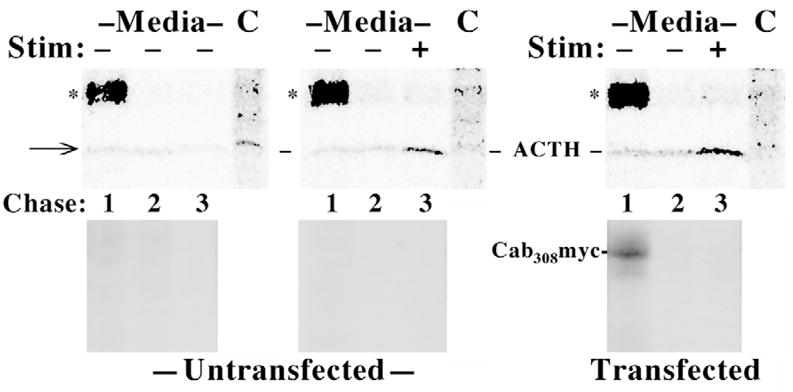Fig. 7.

Secretion of Cab308Myc from AtT20 cells. Two days after transient transfection, untransfected control cells (left panels) or transfected cells (right panel) were pulse-labeled as in Fig. 6B, and then chased sequentially for period 1 (3 hours), period 2 (30 minutes) and period 3 (30 minutes). Periods 1 and 2 were in the absence of secretory stimulus whereas period 3 included either the absence (−) or presence (+) of secretagogue (Stim) as indicated. The upper panels show immunoprecipitation with anti-ACTH from media and from cells (C) at the end of the experiment. A large quantity of constitutive-like release of POMC processing intermediate (asterisk) is seen in period 1 (Dumermuth and Moore, 1998). Stimulus-dependent secretion in period 3 is evident by increased ACTH secretion over that recovered in the medium of period 2 from the same cells, which serves as an internal control. From transfected AtT20 cells, Cab308Myc (lower panels) was immunoprecipitated only from the secretion during period 1, and no further release occurred upon subsequent stimulation of granule exocytosis. The data shown are representative of three independent experiments.
